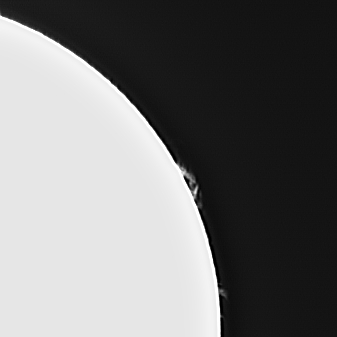Details
Unlike the imaging of dim deep-sky objets, the Sun produces plenty of light, so long exposures are not needed. Instead, short movies are recorded containing a few hundred or thousand frames. Atmospheric conditions blur many of these frames, but the clearest of them can be combined in a technique called 'lucky imaging'. These combined images can then be further processed to bring out details that would not be clear in the individual frames, or with the naked eye. This technique is also used to capture images of the Moon and planet, such as Venus, Jupiter, and Saturn.
Emily used two different telescopes to capture movies to process using 'lucky imaging'. The first was a high magnification scope with a solar filter mounted on it. This filter simply cuts out most of the light of all colors, leaving just a little to reach the color camera. This set up was used to try to capture images of sunspots, but unfortunately there are only two very small ones apparent on the day of imaging. The second telescope only lets through a very specific wavelength of red light from energized hydrogen (H-alpha), meaning a monochrome camera can be used. This telescope shows us broader surface details of the Sun, such as plages (bright active areas), filaments (dark 'strings'), and solar flares. The latter are much dimmer than everything else, when imaging these, the main body of the sun gets very over-exposed. Emily combined and colorized some of these images to give a more natural look.





